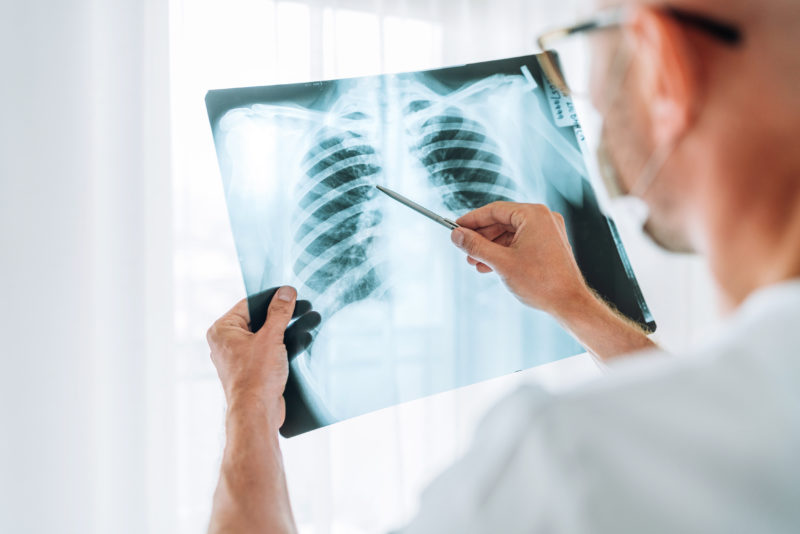It’s hard to imagine being diagnosed with lung cancer, especially for non-smokers. But did you know that this disease is the leading cause of cancer death in Hong Kong? And the number of non-smoking lung cancer patients is increasing. Lung cancer, the “silent killer”, often develops without obvious symptoms until the advanced stages. Early-stage detection and screening is particularly important to high-risk groups, as early treatment of lung cancer increases survival rates.
It’s fair to say there is something of a stigma around lung cancer, and the perpetuation of certain mistruths is partly to blame. DR RAYMOND TSO is a Specialist in Respiratory Medicine. Here, he clarifies eight common myths about this disease and explains the importance of early detection of lung cancer, and treatment options.
MYTH #1: Only smokers suffer from lung cancer
Generally speaking, lung cancer is strongly associated with smoking. It’s true that the risk for those with a long history of smoking is higher. However, there are additional risk factors, including family history, gender (men are more likely to get the disease), age (it’s more typically diagnosed in people in their 40s or older), exposure to second-hand smoke and specific chemicals, and so on. Having said all that, in Hong Kong, there are many female non-smokers suffering from early lung cancer. Some cases may be related to gene mutations, which commonly include EGFR, ROS1, ALK, PD-L1 and KRAS.
MYTH #2: Electronic cigarettes are less harmful to our bodies
Nowadays, a lot of traditional cigarette smokers transition to electronic cigarettes, as they misperceive that the electronic counterparts do only little harm. In fact, smokers still inhale a lot of toxic and carcinogenic chemicals into the lungs through e-cigarettes, which harm their health the same way traditional cigarettes do.
MYTH #3: Quitting smoking reduces the risk of lung cancer in both heavy and light smokers
Quitting smoking for 15 years can reduce the risk of lung cancer, but the number of cigarettes consumed in the whole lifetime is still an important factor. A pack-year is a unit representing the amount a person has smoked in a certain period. It is calculated by multiplying the number of packs of cigarettes smoked per day by the number of years one has smoked. There is a higher risk oflung cancer for smokers with a 30 pack-year of smoking history than light smokers who smoked fewer than 10 pack-years.
MYTH #4: All lung cancer patients suffer from coughing as a symptom
Although coughing is regarded as one of the early symptoms of lung cancer, many patients remain asymptomatic until the later stages. When this silent disease progresses, patients may experience blood-stained sputum, coughing up blood, chronic coughing for months and weight loss. Some patients may also suffer from chest pain and muscle pain. Neurological symptoms may appear as a sign of brain metastasis in severe cases and may reduce mobility if emerged.
MYTH #5: A lung cancer diagnosis requires numerous check-ups
Lung cancer screening has improved in recent decades. Chest X-ray and sputum cytology were used for screening in the past. However, these have largely been replaced by better methods. In early 2010, a National Lung Screening Trial in the US showed that low-dose CT could detect lung cancer in early stages.
Low-dose CT is a computer tomography (CT) of the lung with a lower dose of radiation. This tool can check for nodules and pathology in the lung with minimal harmful effects. It can be offered quickly to high-risk members of the population at a relatively low cost.
MYTH #6: Genetic testing is necessary for all lung cancer patients
Some patients who suffer from lung cancer due to a gene mutation are recommended to perform genetic testing to identify the mutated gene type. The identification can help doctors to tailor treatment options for individual patients, which can improve the survival rate. Lung tissues of the patient are extracted and sent to a laboratory for genetic testing. Blood samples would also be used to check for any cancer cells or genes. Different targeted therapies will then be prescribed according to the specific type of genetic mutation.
MYTH #7: Only people with symptoms need to undergo screening
According to the National Lung Screening Trial, males, smokers aged 55 or above and people with risk factors associated with lung cancer are recommended for screening. However, given the high number of non-smoking females diagnosed with lung cancer in Hong Kong, it’s recommended that smokers or anyone aged 40 or above with a family history should undergo lung cancer screening. Early lung cancer detection allows for timely treatment, which, again, can increase the survival rate.
MYTH #8: Lung cancer patients have poor survival rates
For stage 1 and early stage 2 lung cancer patients, the survival rate is comparably higher. Lung cancer cells can be directly removed through surgery, with annual low dose CT as a follow-up. The 10-year survival rate after such curative surgery can
be up to 80 percent.
Radiotherapy and chemotherapy are traditional treatment options for stage 3 and 4 patients. This is where cancer cells have spread to the brain and/or bones. With modern advanced treatments such as targeted therapy and immunotherapy, along with long-term treatment adherence, the survival rate can be remarkably enhanced when compared to a decade ago.
Although signs and symptoms of lung cancer are not always present until the disease advances, early detection and timely treatment are critical to improve survival. Those who are considered high risk are recommended to go for a lung cancer screening as soon as possible.
You can find out more about lung cancer in this video.
Subscribe to Expat Living now so you never miss an issue!






